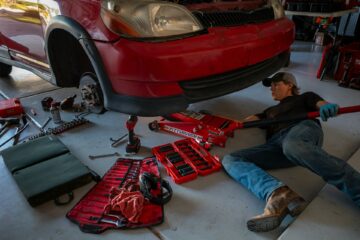The backbone of America’s supply chain depends on commercial truck drivers. From delivering food across the country to transporting critical and hazardous materials, these professionals carry enormous responsibilities. Given the demanding nature of their work, improving their work environments is essential to make the job more manageable and sustainable. Ergonomic support has emerged as a key solution for the trucking industry. Whether you are a driver, owner-operator, or fleet manager, understanding the value of ergonomics and its role in preventing health issues is vital.
Poor posture and suboptimal working conditions often lead to fatigue, injuries, and long-term health problems for drivers. According to OSHA, truck driving is among the professions with the highest rates of work-related injuries, particularly musculoskeletal disorders. These conditions can result in chronic pain, limited mobility, and even mental health concerns such as depression. Addressing these issues begins with improving posture and creating better working conditions. Drivers should prioritize proper seat positioning and body mechanics both when driving and while handling cargo. Avoiding habits like slouching, forward head posture, and overreaching can make a significant difference in long-term health.
Effective ergonomic solutions not only reduce the risk of injury but also enhance driver safety and comfort. Greater comfort helps drivers maintain focus and alertness during long hauls. Simple modifications such as upgrading seat cushions, backrests, armrests, lumbar supports, and ergonomic steering wheels can reduce strain and improve overall well-being. Highly adjustable seating systems tailored to individual drivers allow for a personalized and supportive fit. Incorporating technology like smart dashboards and telematics also contributes to safer and more comfortable driving conditions.
Maintaining a truck’s mechanical systems is another critical aspect of driver comfort and safety. Regular upkeep, including replacing brake shoes and checking power steering components, helps ensure smooth vehicle operation. Well-maintained systems reduce physical strain on drivers by improving handling and providing peace of mind on the road.By investing in ergonomic enhancements and prioritizing vehicle maintenance, the trucking industry can better support drivers, reduce health risks, and boost efficiency across fleets. These proactive steps make a lasting difference in creating safer, more sustainable working conditions for the people who keep supply chains moving. Explore the resource below from Fitzgerald, a trucker parts supplier, for additional insights and guidance.












